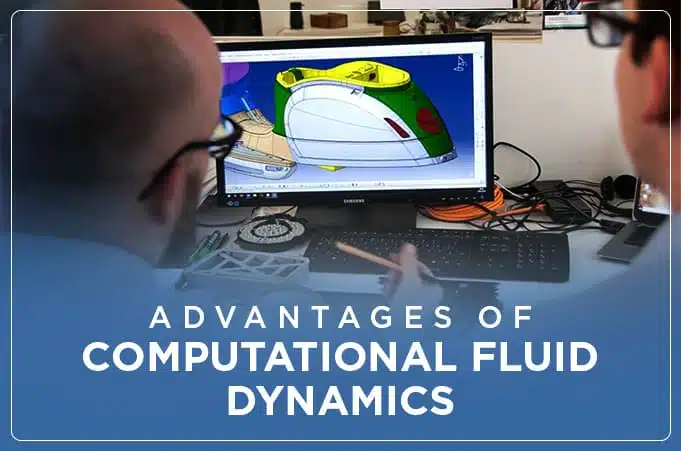
Computational Fluid Dynamics (CFD) is a branch of fluid mechanics that is used to analyze and solve problems involving fluid flows. It uses numerical analysis and data structures to solve the problem. With its wide range of applications in research and engineering problems, CFD proves to improve performance, enhance reliability, improve product consistency, and yield higher plant productivity.
What is Computational Fluid Dynamics (CFD)?
CFD is the science of predicting fluid flow, mass transfer, heat transfer, chemical reactions, engine & combustion analysis, and related phenomena. This process is done by solving the mathematical equations that govern operations using a numerical algorithm. The results yielded from CFD analysis are used in conceptual studies of new designs, troubleshooting, re-designing, and detailed product development.
CFD is based on Navier-Stroke estimates, which explain the properties of flowing liquids like pressure, speed, density, and temperature. These studies are advantageous in meteorology, oceanography, astrophysics, oil refining, and architectural sectors.
The process of CFD involves the usage of computers to perform the calculations required to stimulate the free-stream fluid flow and the interaction of the fluid with surfaces defined by boundary conditions. The final results provide data for flow, turbulence, reaction, heat transfer, local liquid velocities, temperatures, concentrations, reaction rates, volume fractions, and much more, of various phases. These resolutions can be used to solve the largest and most complex problems like transonic or turbulent flows.
What are the advantages of Computational Fluid Dynamic Solutions?
- CFD predicts performance before installation of systems:
In addition to modifying and installing virtual systems or prototypes, CFD can estimate which design considerations are most significant for performance improvement.
- CFD program provides detailed information about HVAC design parameters:
Developments in HVAC / IAQ technologies need increasingly accurate information on flow inside the habitat. The CFD approach achieves this aim better than any other method, theoretical or experimental.
- CFD Software saves money and time:
As computers become more powerful, CDF solvers help analyze failure, thus reducing the cost of production.
- CFD is dependable:
The number of schemes and methods on which CFD is based is constantly developing. This increases the dependability of CFD-produced results. CFD becomes a more reliable tool for every design or analytical process as its dependability improves.
- CFD reduces scale-up problems:
As CFD programs are based on fundamental physics and are scale-independent; they effectively reduce scale-up problems
- CFD can be used to complement physical modeling:
The CFD software can be used to analyze new systems before deciding how many validation tests need to be employed. It also enables the isolation of specific phenomena for study.
- CFD is used to test limits:
CFD techniques enable the study of systems under conditions. It can also be used in studying systems that exceed their limits.
To further illustrate the successful applications of Computational Fluid Dynamic Solutions, we will discuss a few examples.
| Example | What is it? | What information is derived using CFD software? |
|---|---|---|
| Stirred Tank Reactor (STRs) | A STR is a model that is frequently used to predict the key unit operation variables when deploying a continuous agitated-tank reactor to achieve the desired output. |
|
| Fluidized beds | A fluidized bed is a physical phenomenon that occurs when a solid particle substance (often in a holding vessel) is exposed to variables that cause it to behave like a fluid |
|
| Bubble column bubble | Bubble columns are contactors in which a discontinuous gas phase moves relative to a continuous liquid phase as bubbles move. |
|
| Twin-screw extruders | Single and twin-screw units melt, convey, compress, and mix various substances. |
|
To Sum Up
The applicability of Computational Fluid Dynamics has grown considerably. It is capable of obtaining extensive and detailed information about flow-related phenomena. It allows a practical test in a variety of situations, and thus, enables quick analysis of the causes of low performance and optimizes the conditions. It eliminates the productivity failure due to constraints of high temperatures, pressures, and low yields.
Technosoft Engineering CFD services help identify the problems before introducing your product to the market. We acquire insight and identify design optimization potential, thereby reducing risks and costs. We provide a complete range of CFD services to convert the product design from concept to reality.
To get in touch with us, visit our website technosofteng.com